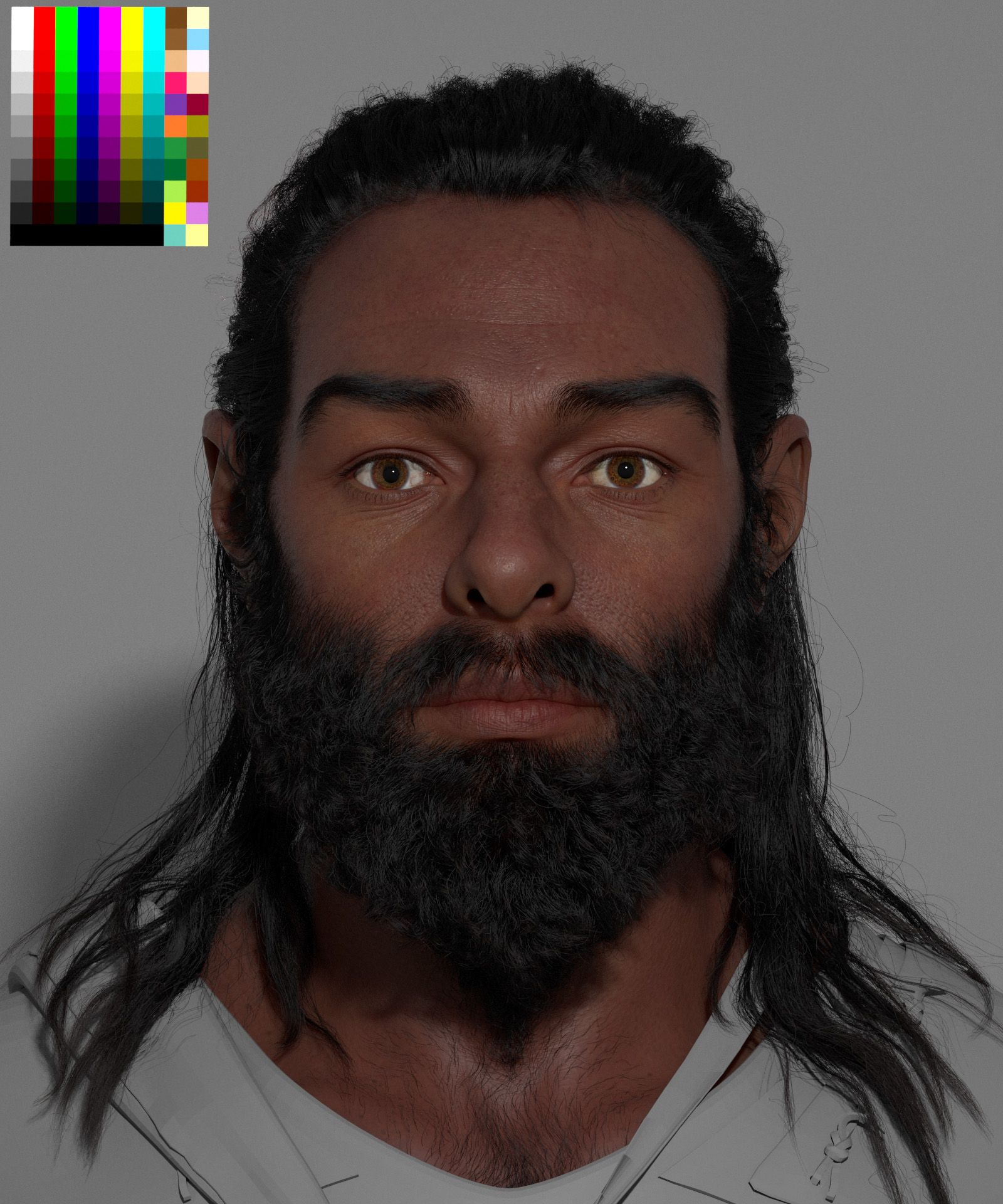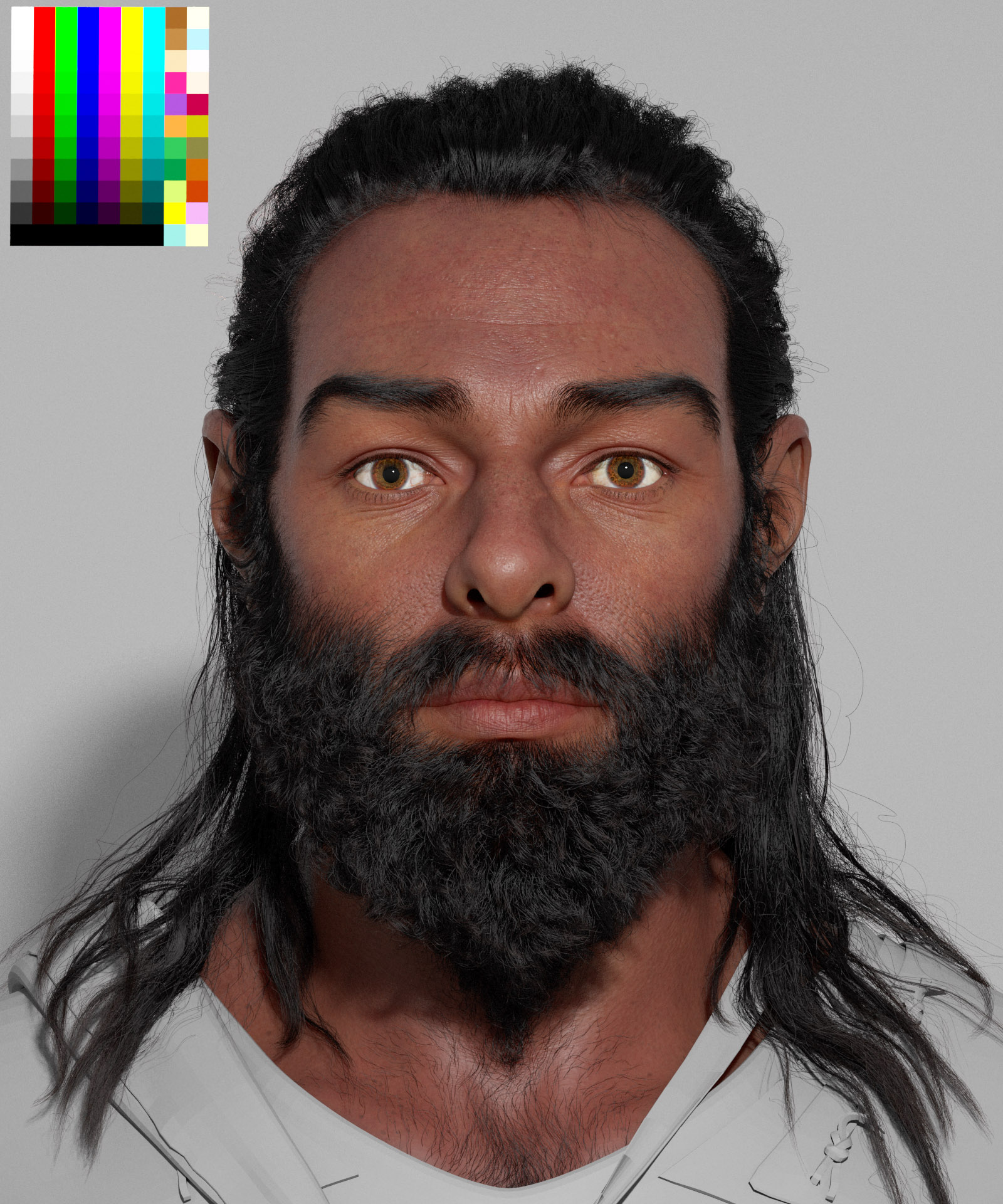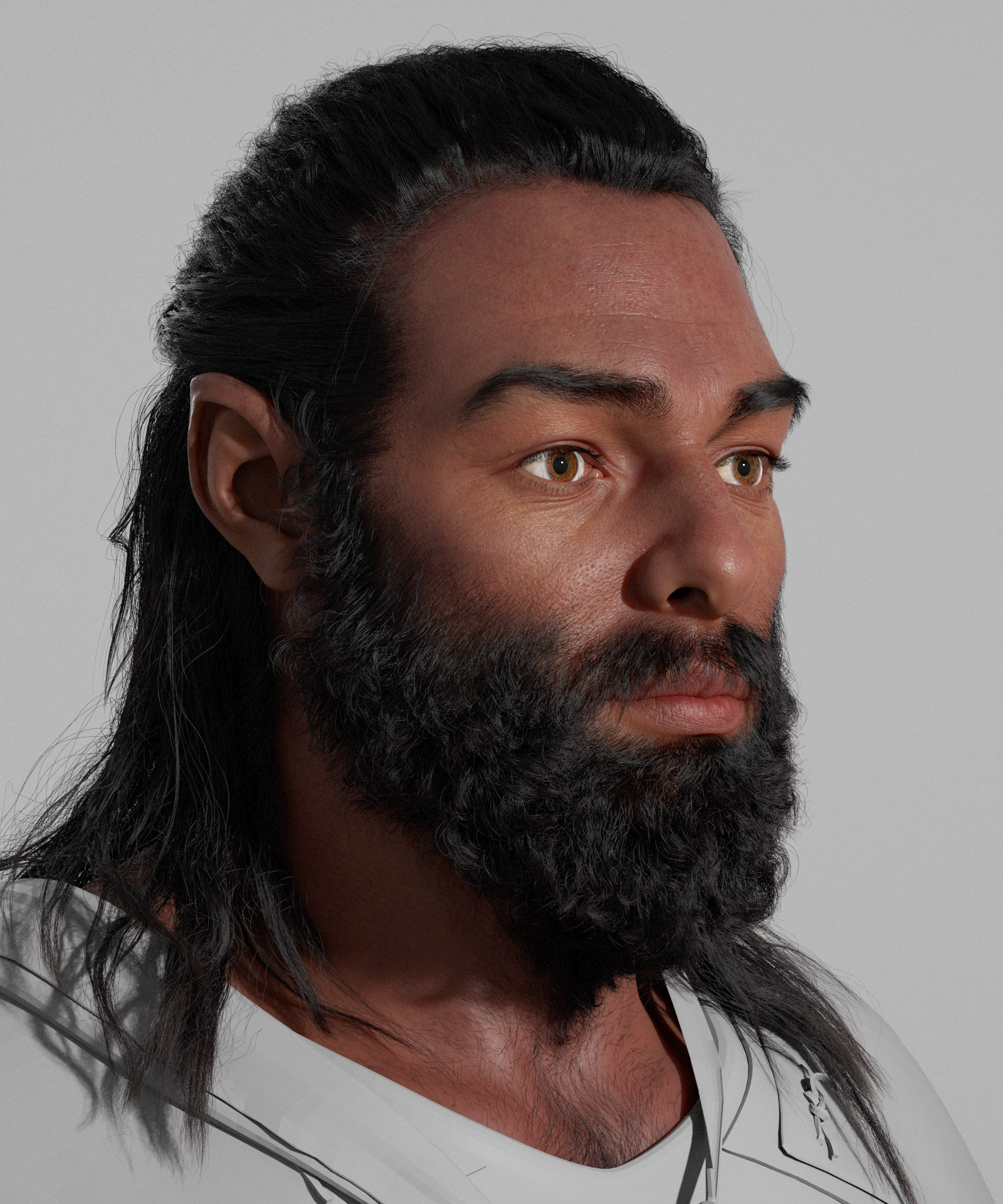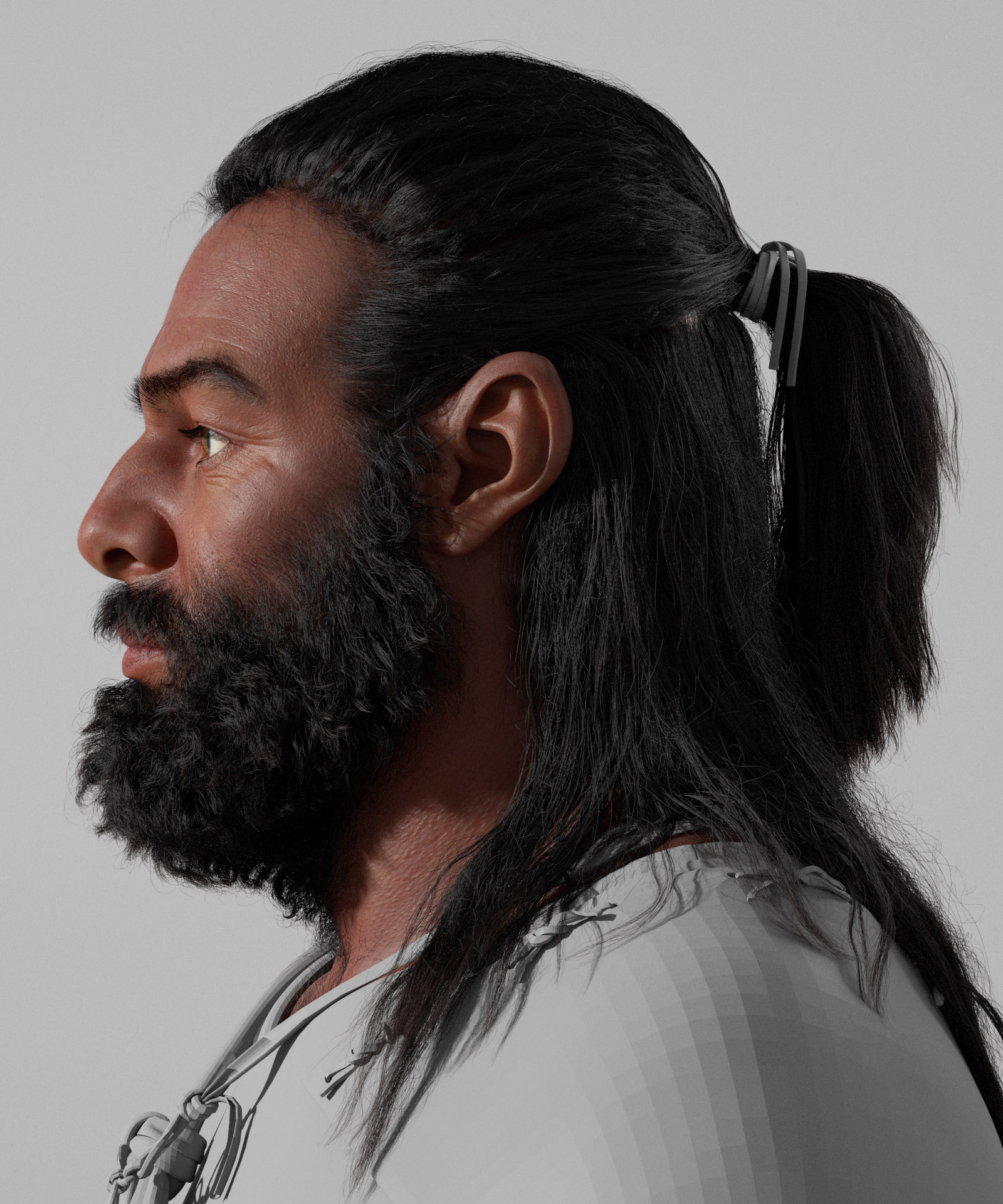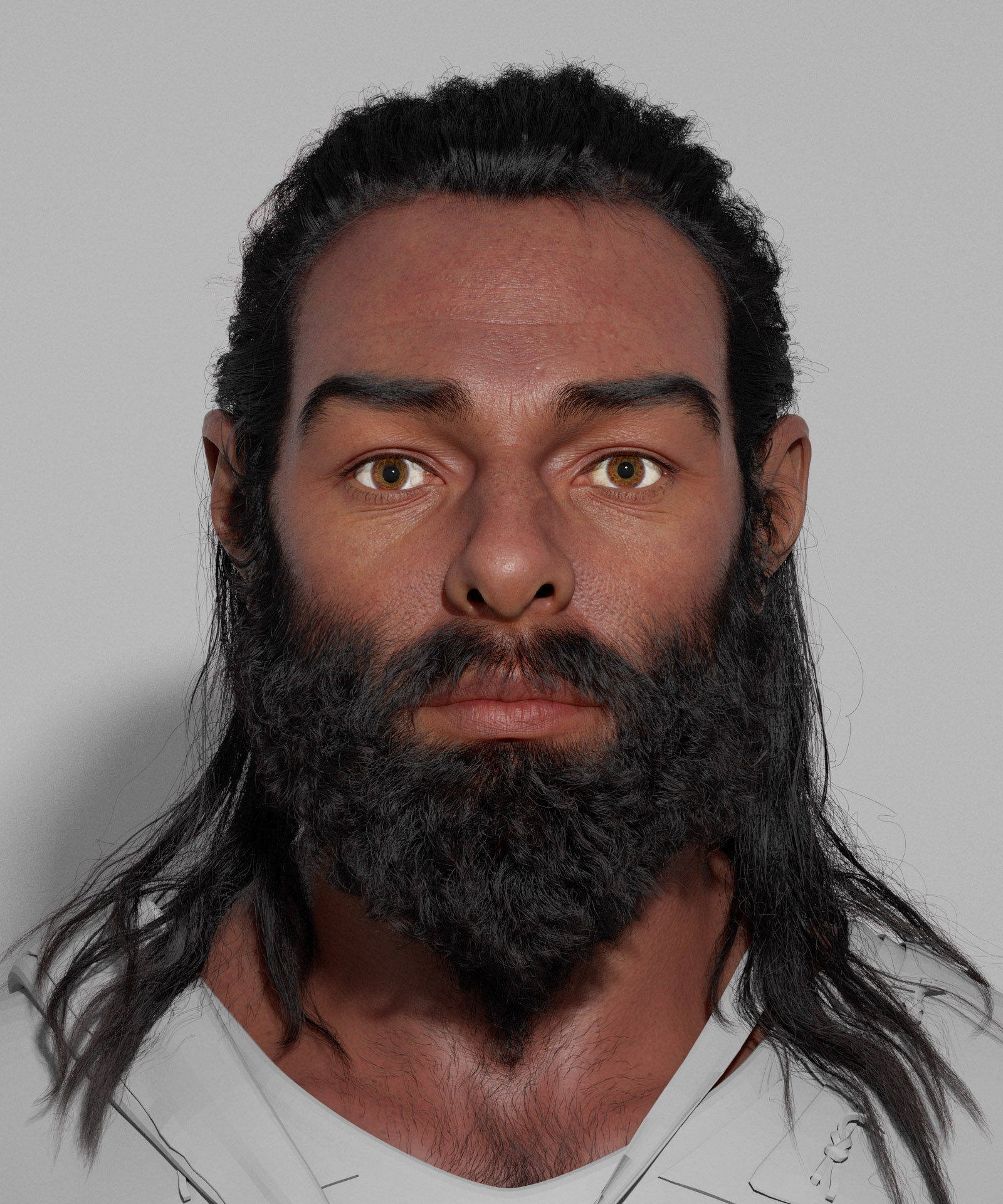Thanks jderiggi. In this case I opted to fully sculpt the details in Zbrush using several custom alphas that I’ve created and a lot of hand sculpting. The fine detailing in the lips and lower eyelids for example are all fully hand-sculpted. I wanted to challenge myself to take the details a little further than I have on previous hand sculpted models in part because, while there are fantastic displacements available from places like texturingXYZ and surface mimic, the fact is that you can’t entirely rely upon such resources, such as when doing a non-human character or any time you want a very particular look, and in this case I wasn’t entirely sure what kind of surface character I wanted. By sculpting it I felt I could more easily explore possibilities. Having said that, now that I’ve finished this sculpt I find that I can’t escape the fact that with the displacement resources available from the aforementioned sources I could get better details in several places and I’m considering the idea of touching up the exported displacement maps of the sculpt with displacement maps from one of those other two sources. It feels a bit like cheating to do it that way, but I think it’s the right choice when the primary concern is getting the best details possible, and I’ll probably use more of that method in other area’s of the body.
FYI - the following will give you an idea of where this guy is headed:

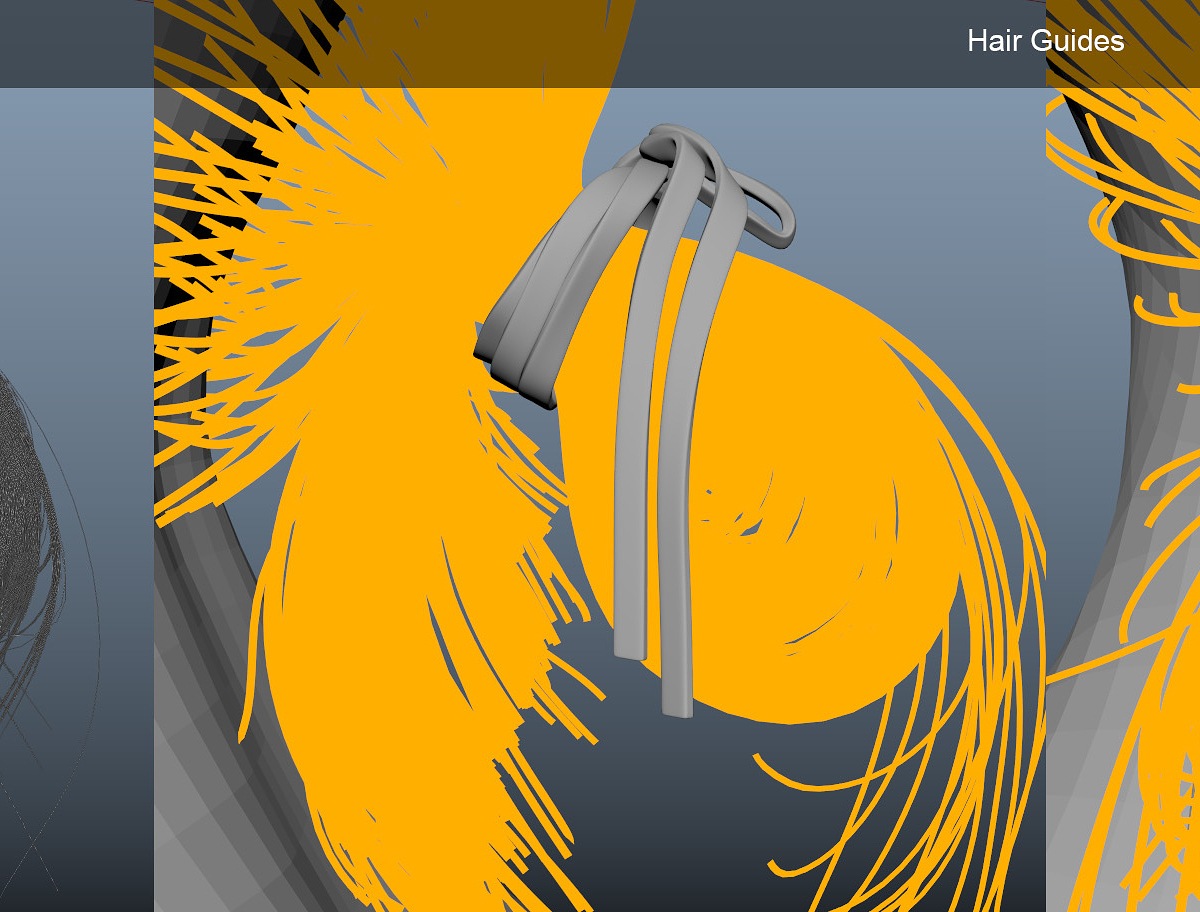
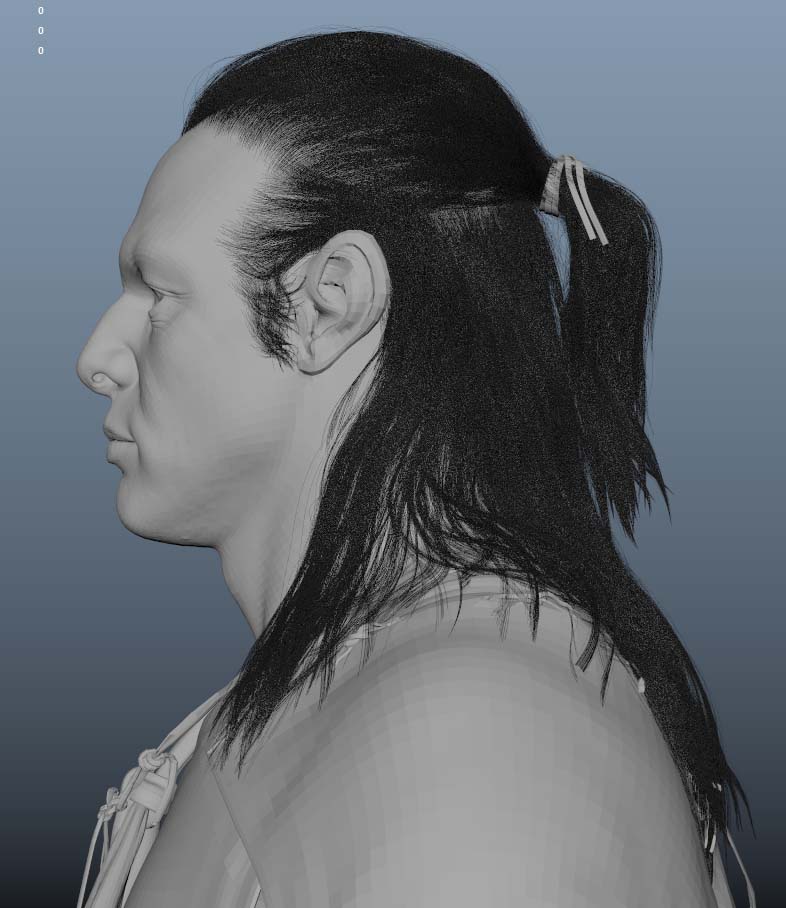
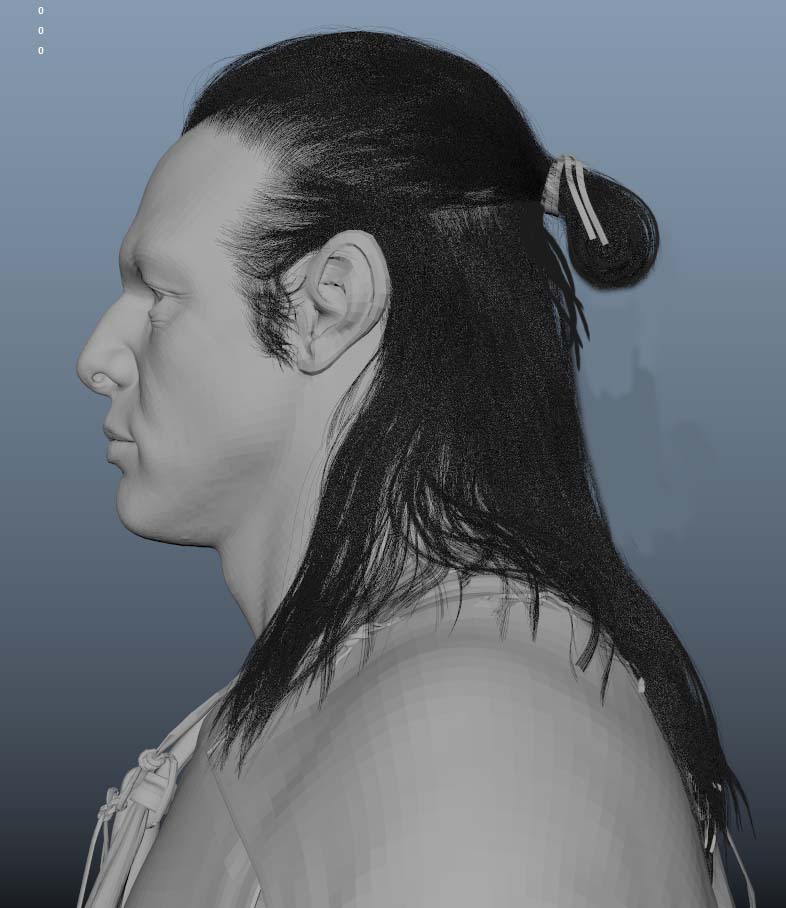
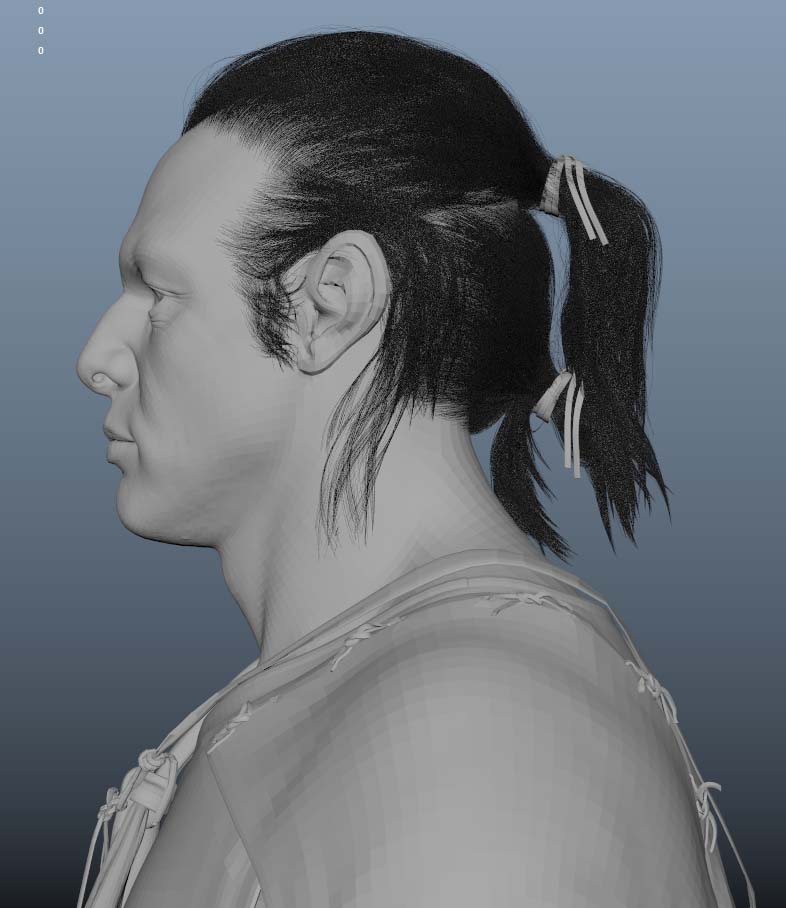
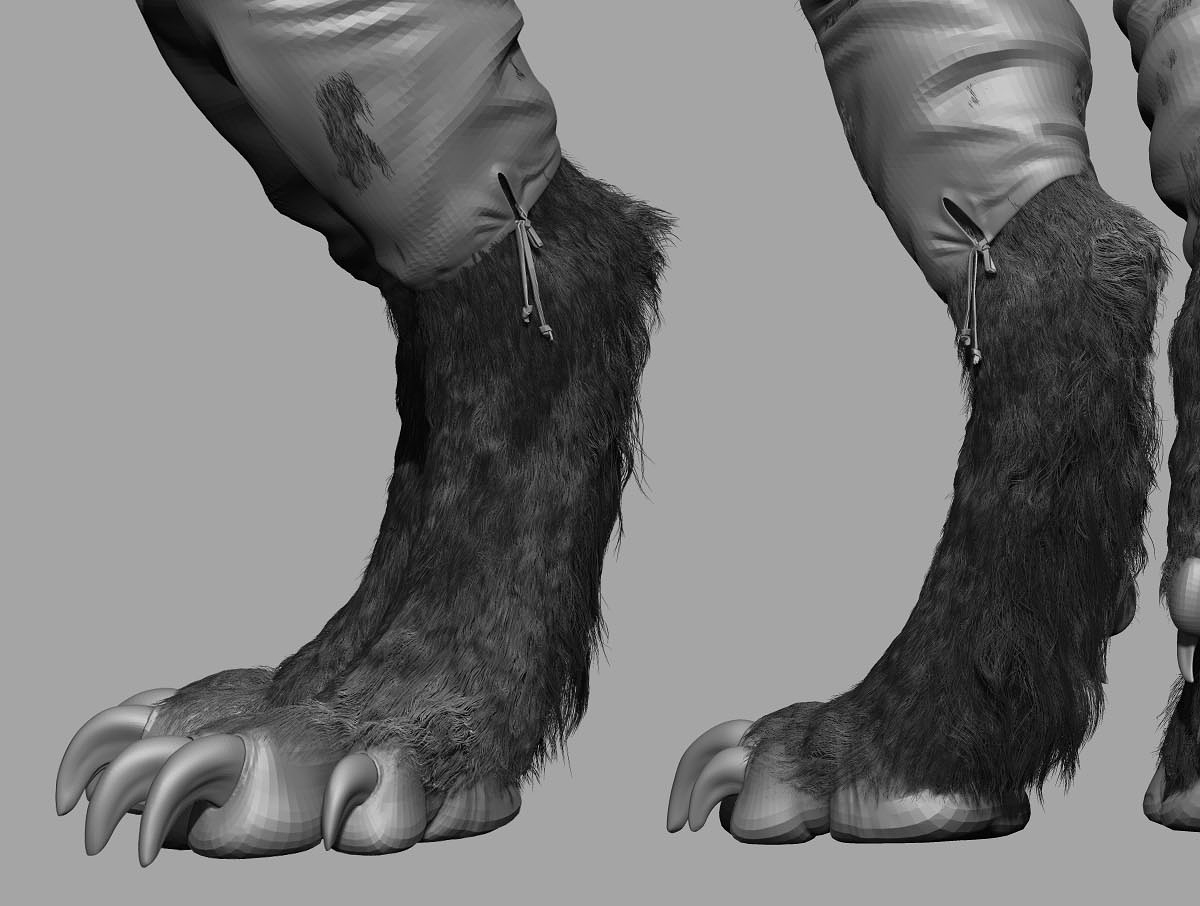
 this is looking so cool man ! cheers!
this is looking so cool man ! cheers!







 Awesome fibermesh work.
Awesome fibermesh work.